TESSA - Toolkit for Ecosystem Service Site-based Assessment
How did the TESSA move into the digital age?
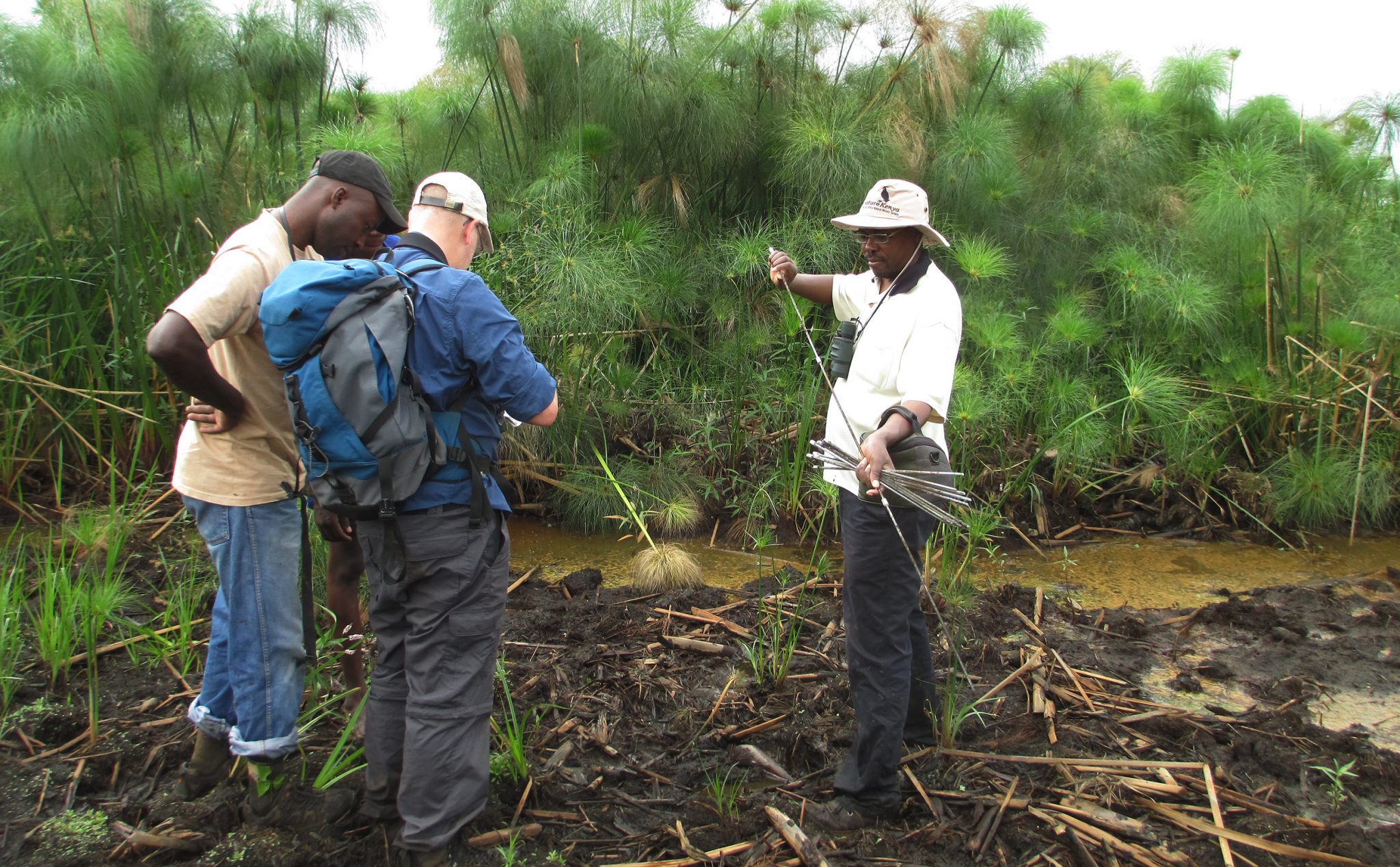
In Brief
Client
TESSA
Title
Toolkit for Ecosystem Service Site-based Assessment
Projects
Concept
Decision-makers need reliable information on the net change in ecosystem services of alternative land uses at sites. The TESSA toolkit was developed as a locally relevant and globally applicable Toolkit for Ecosystem Service Site-based Assessment to guide non-specialist users through various methods for rapidly quantifying a range of ecosystem services.
Website
tessa.tools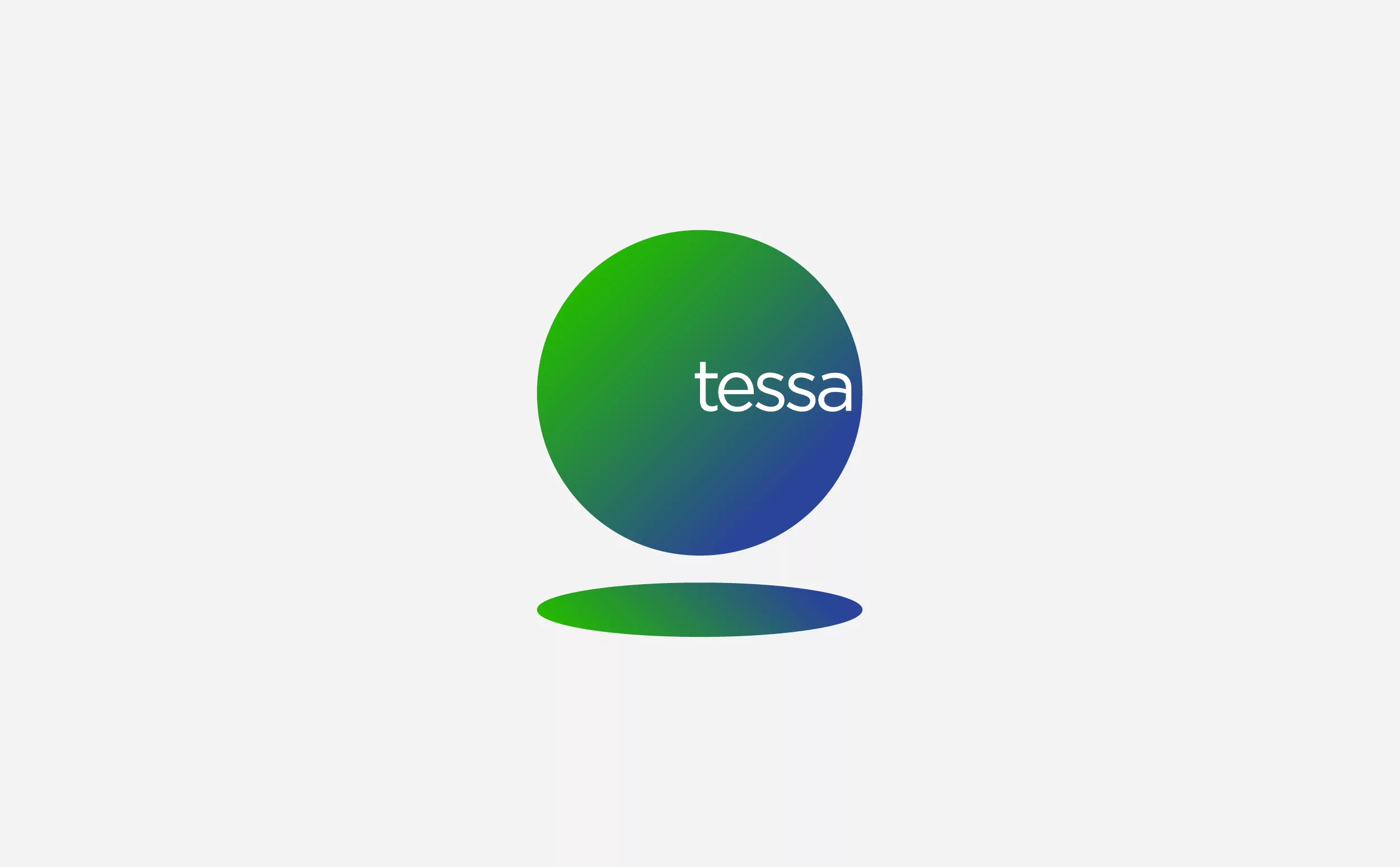
Background
A collaboration of six institutions with input generously provided by scientists and practitioners from multiple disciplines developed “The Toolkit for Ecosystem Service Site-based Assessment”, fondly known as TESSA. Aimed primarily at conservation practitioners the toolkit provides a wealth of guidance on low-cost methods for how to evaluate the benefits people receive from nature at particular sites. This information is then used to influence decision making. Peek's challenge was to take this primarily paper-based tome and adapt it to take advantage of modern technology.
Industry Setting
A consortium of experts from Cambridge University, Anglia Ruskin University and surrounding NGOs developed a guidance manual (including practical methods) for assessing how nature’s values contribute to human well-being. This ‘Toolkit for Ecosystem Service Site-based Assessment’ (TESSA) guides non-specialists through a selection of accessible, low-cost methods to identify the benefits that ecosystems provide to people, evaluating these compared with those expected under alternative land uses.
The TESSA toolkit is an easy-to-use workbook that leads the user through the steps needed to assess the ecosystem services provided at a particular site. It is built around a comparison of the site in two alternative states, e.g. before and after restoration or conversion, and encourages a high level of stakeholder engagement.
TESSA targets nonprofit organisations, e.g. NGOs (particularly local and national organisations), research institutions and government agencies who lack the capacity and tools for understanding and implementing such assessments.
The TESSA toolkit is an easy-to-use workbook that leads the user through the steps needed to assess the ecosystem services provided at a particular site. It is built around a comparison of the site in two alternative states, e.g. before and after restoration or conversion, and encourages a high level of stakeholder engagement.
TESSA targets nonprofit organisations, e.g. NGOs (particularly local and national organisations), research institutions and government agencies who lack the capacity and tools for understanding and implementing such assessments.
Challenge
The TESSA originally existed as a huge resource of Word, PDF, PowerPoint and Excel files. The aim of the project was to convert a wealth of information into a stimulating, accessible and interactive digital user-friendly interface, thus making the TESSA available to a wide range of users. The document itself had no identity so it was up to Peek to create an icon that would represent the TESSA worldwide.
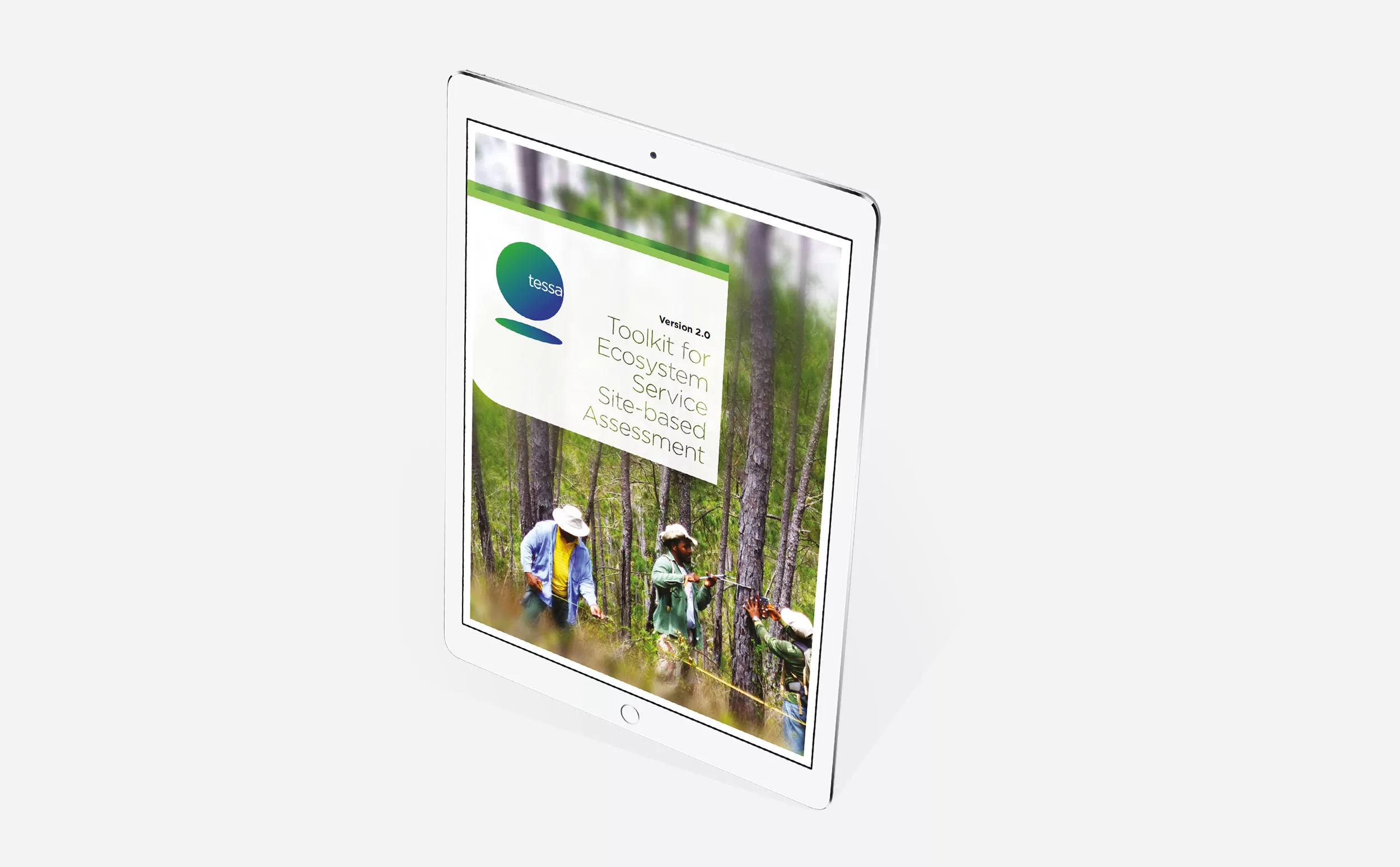
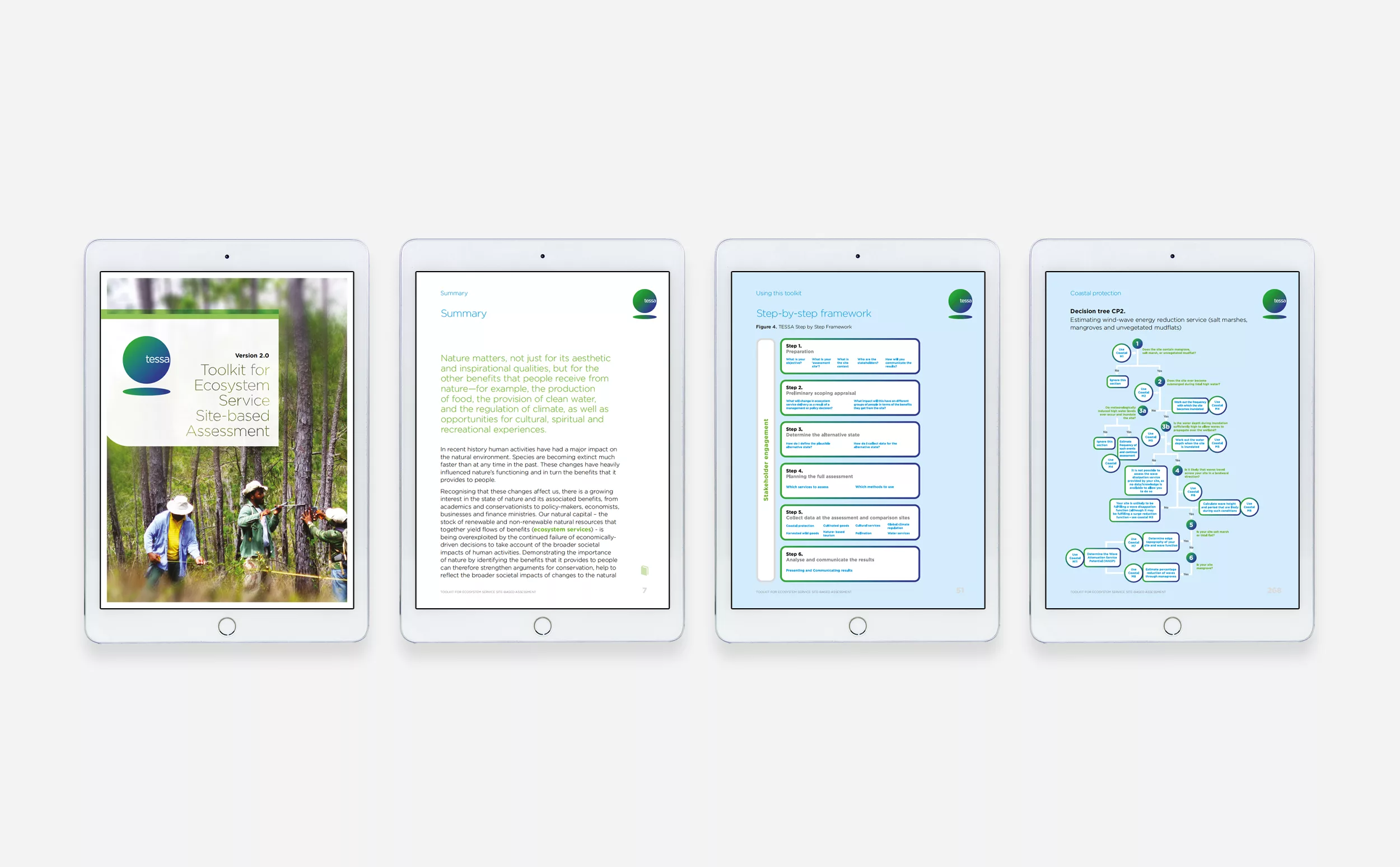
Strategy
The toolkit was initially developed for conservation practitioners but can be used by anyone, including those with no prior knowledge of ecosystem services. In order to make it usable to a wider audience the new design featured:
- an introduction to the concepts of ecosystem services and natural capital
- guidance on how to conduct a preliminary scoping appraisal to identify important services and beneficiaries
- decision trees to identify the best methods to use for each service
- links to a set of simple low-cost methods for measuring ecosystem services either qualitatively or quantitatively
- a selection of worked examples
- instructions for collecting site-specific data where appropriate (including field surveys and stakeholder input). There is also guidance on how to communicate results to decision-makers.
The toolkit is based on an interactive pdf document which leads the user through a simple step-by-step approach to assess the main ecosystem services provided by the site. Preliminary guidance helps the user to select a suitable site, define the exact questions to be addressed, engage the relevant stakeholders and find out about the local political and socio-economic context.
The first step is then a scoping appraisal to identify which are the most important services for the site. For each of these services, there is a choice of several assessment methods, including manual calculations, stakeholder mapping, field surveys or modelling tools (options include use of the WaterWorld and Co$tingNature models).
A decision tree helps the user to choose the most suitable method, given the available data and resources. Electronic links take the user to separate short pdfs which describe how to apply each method, and there are also links to additional guidance documents and case studies.
The first step is then a scoping appraisal to identify which are the most important services for the site. For each of these services, there is a choice of several assessment methods, including manual calculations, stakeholder mapping, field surveys or modelling tools (options include use of the WaterWorld and Co$tingNature models).
A decision tree helps the user to choose the most suitable method, given the available data and resources. Electronic links take the user to separate short pdfs which describe how to apply each method, and there are also links to additional guidance documents and case studies.
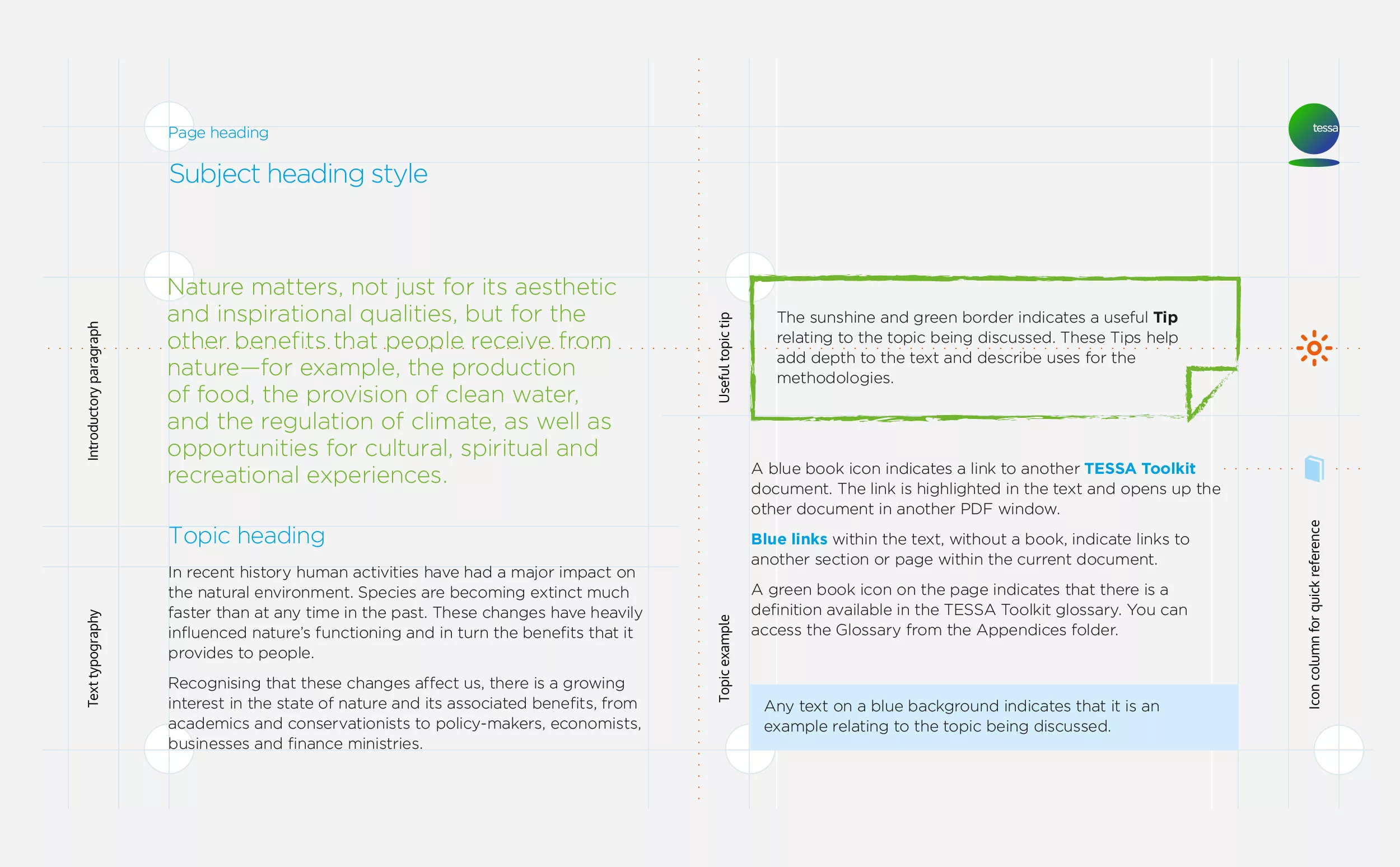
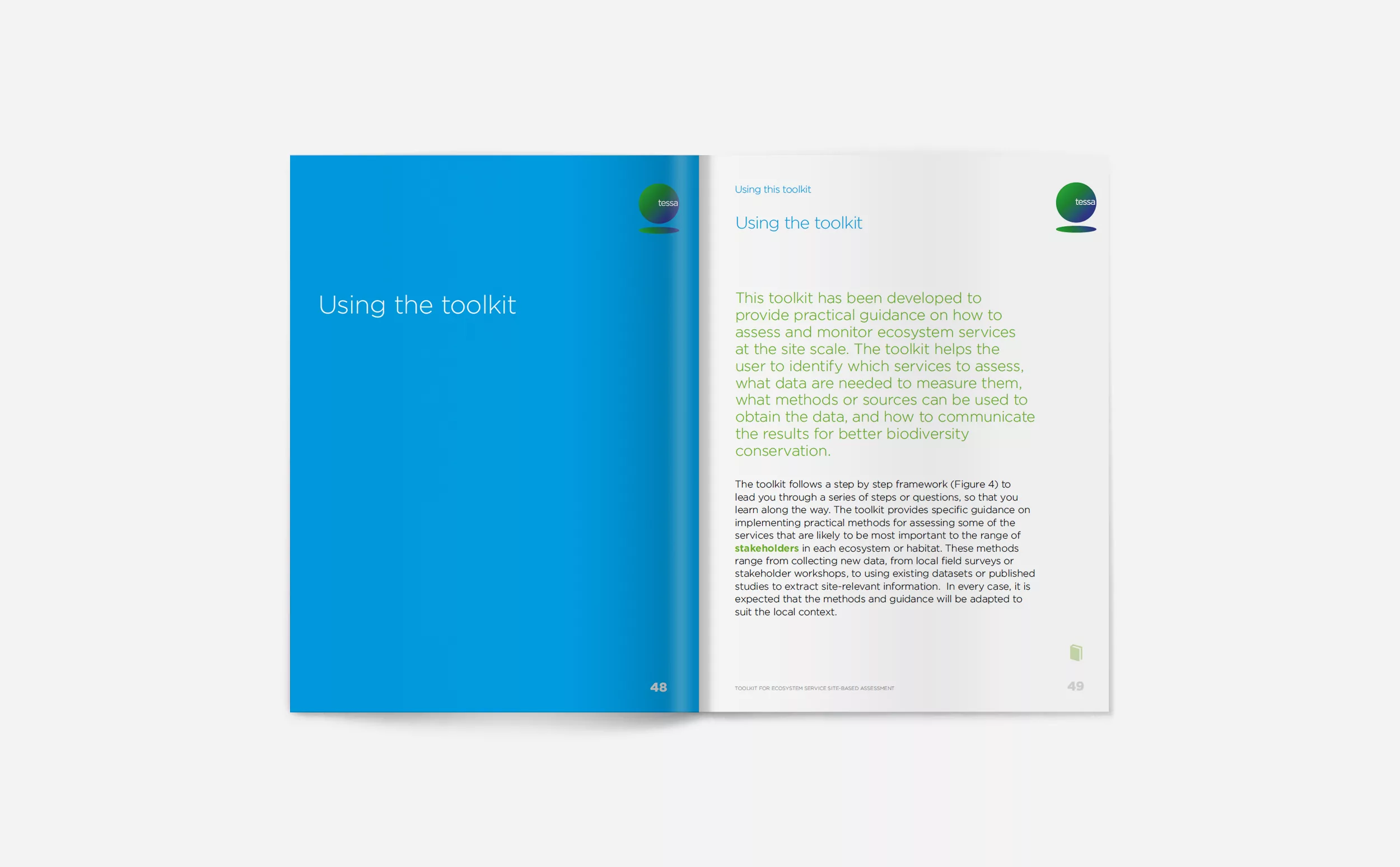
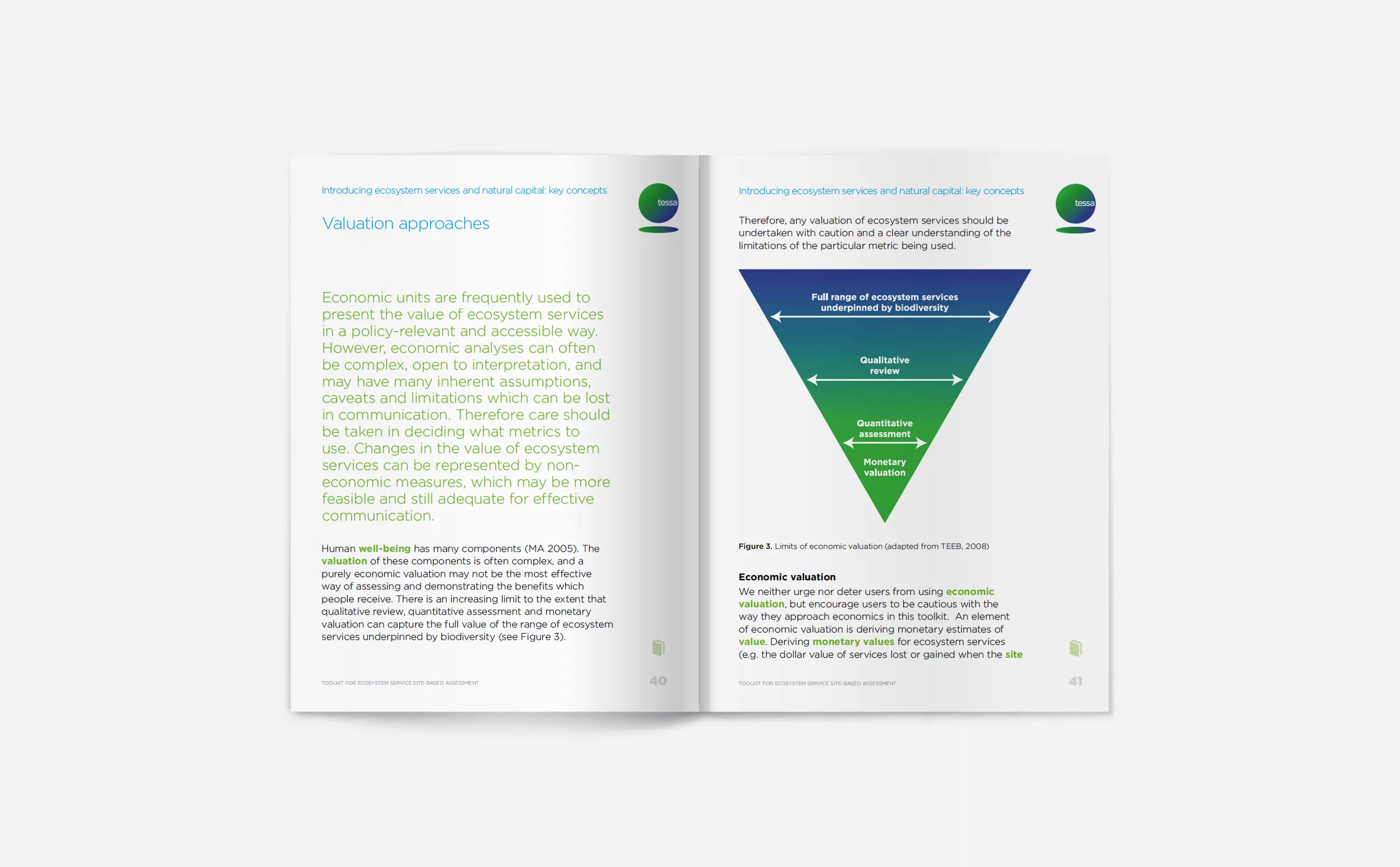
Result
The TESSA has successfully been used across the world including the Dominican Republic, Vietnam, Kenya and Fiji. In Maastricht, it was used to carry out an assessment as part of an Interreg-funded project, known as Restore, which developed a framework for restoring minerals sites (quarries) to provide benefits for biodiversity, local people and local economies. In Cameroon, the study found that global climate regulation, water quality and the value of harvested wild goods were reduced in the cocoa plantations, demonstrating benefits both locally and globally from conserving forest habitat.
TESSA now guides non-specialist users through various methods for rapidly quantifying a range of ecosystem services.
TESSA's participatory approach increased the likelihood of findings being translated into effective action.
Assessments for current and alternative states estimate net consequences of such changes for different stakeholder groups.